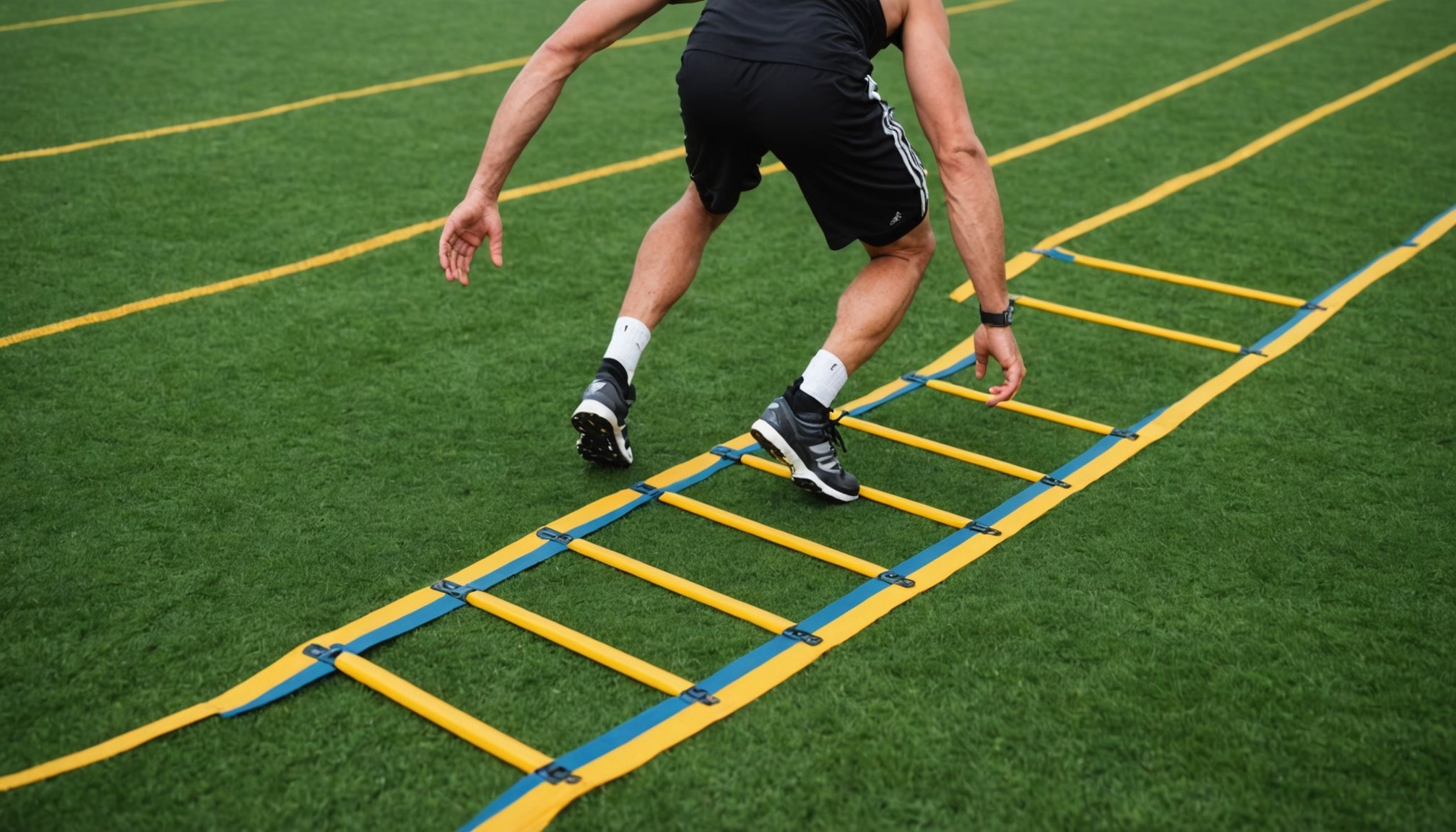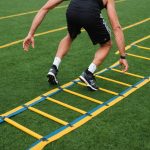As we delve into the world of fitness, we continually encounter different training methods designed to boost our physical capabilities. Agility ladders, a popular tool in many training regimens, often pose a question that piques our curiosity: Can their inclusion in workouts improve muscular coordination? This article aims to explore this query, shedding light on the relationship between agility ladder exercises and muscular coordination.
Understanding Muscular Coordination
Before we delve into the main topic, it’s vital to understand what muscular coordination entails. It refers to the ability of multiple muscles to work together to execute a specific movement or task. Good muscular coordination is essential in everyday activities and is an important aspect of fitness and athletic performance.
In the same genre : How does the type of shoe influence squat depth and posture?
The Role of Muscular Coordination in Physical Fitness
Muscular coordination plays a crucial role in overall physical fitness. It allows you to perform movements with precision and efficiency, reducing the risk of injury and optimizing your fitness performance. Moreover, it enhances your balance, stability, and agility, which are critical in sports and fitness activities.
Several factors influence muscular coordination, including the nervous system, proprioception (the ability to sense the position and movement of our body parts), and the level of training and exercise you engage in. Regular exercise, particularly those that involve complex movements, can significantly improve your muscular coordination.
In the same genre : How does the angle of incline affect muscle activation in bench presses?
Agility Ladders: A Quick Overview
Agility ladders, as the name suggests, are ladders laid flat on the ground. They come in various sizes and serve as a tool for agility training, which involves quick, precise movements. The idea is to move through the ladder as quickly and accurately as possible, using a variety of foot and movement patterns.
The Benefits of Agility Ladder Training
Agility ladder workouts offer a multitude of benefits. They improve your speed, agility, and quickness, all of which are vital in many sports like football, basketball, and soccer. They also enhance your cardiorespiratory fitness, as the workouts tend to be high intensity.
But perhaps one of the most significant benefits of agility ladder training lies in its ability to improve muscular coordination. The complex footwork and quick movements required in agility ladder exercises challenge your muscles to work together in a coordinated manner.
Agility Ladders and Muscular Coordination: The Connection
Here’s where we answer the main question: Can the inclusion of agility ladders in workouts improve muscular coordination? The answer is a resounding yes. Agility ladder exercises require a great deal of coordination as they involve intricate footwork patterns that need to be executed quickly and precisely.
How Agility Ladders Improve Muscular Coordination
Agility ladder workouts challenge your muscular coordination in numerous ways. First, they require your lower body muscles to rapidly contract and relax in a specific sequence to perform the footwork patterns. This rapid contraction and relaxation of muscles in a specific order can improve the coordination between your muscles.
Moreover, agility ladder exercises require considerable proprioception, which is the awareness of your body’s position and movement. As you navigate through the agility ladder, you have to be aware of where your feet are to avoid stepping on the ladder. This awareness helps improve the coordination between your muscles and nervous system, enhancing overall muscular coordination.
Incorporating Agility Ladders in Your Workout Regimen
In light of the clear benefits agility ladders provide for muscular coordination, it’s worth considering incorporating them into your workout regimen.
Tips for Using Agility Ladders
If you’re new to agility ladder training, start slow. Begin with basic footwork patterns and gradually increase the complexity as your coordination improves. It’s also important to maintain a good posture during the exercises to ensure the effective engagement of your muscles. Additionally, remember to warm up before starting your agility ladder workout to prepare your muscles for the intense exercise.
In summary, the inclusion of agility ladders in workouts can indeed improve muscular coordination. Through intricate footwork patterns and the requirement for rapid muscle contraction and relaxation, agility ladder exercises enhance your body’s ability to coordinate muscle movements. So, next time you plan your workout, consider adding an agility ladder to the mix for a comprehensive and well-rounded fitness routine.
Exploring Different Agility Ladder Drills
Agility ladders offer a plethora of drills that you can integrate into your workout regimen. Each drill targets different aspects of muscular coordination, offering a comprehensive approach to enhancing your physical fitness.
Single In-and-Out Exercise
This drill is a beginner-level exercise that aims to get you started with agility ladder training. In this exercise, you will step into each square of the ladder with both feet, then step out on the other side. The pattern continues along the entire length of the ladder. The goal is to complete the drill as quickly as possible without tripping or losing balance. This exercise demands basic muscular coordination as your feet must follow a specific pattern swiftly and accurately.
Lateral High-Knees Exercise
This intermediate-level agility ladder drill challenges your muscular coordination to a greater extent. As the name suggests, you perform a high-knees run, but instead of moving forward, you move sideways. This lateral movement introduces a new challenge, requiring greater coordination between your muscles and nervous system. The lateral high-knees exercise is an excellent way to enhance your agility, speed, and balance, serving as a valuable addition to your workout routine.
Maintaining Consistent Agility Ladder Training
For agility ladder exercises to improve muscular coordination effectively, consistency is key. Regular practice will help you become more adept at the footwork patterns and enhance your muscular coordination over time.
Setting a Regular Training Schedule
A good practice is to incorporate agility ladder exercises into your workout routine at least two to three times a week. This regularity allows your body to adapt to the complex movements, leading to improvements in muscular coordination.
Progressing at Your Own Pace
When it comes to agility ladder training, there’s no need to rush. Progress at your own pace, gradually increasing the complexity and speed of the drills as your coordination improves. Remember, the goal is not to complete the drills as quickly as possible but to execute the footwork patterns accurately and efficiently.
Conclusion
In conclusion, agility ladders are a valuable tool for improving muscular coordination. Their inclusion in workouts allows for a diverse range of drills that challenge and enhance your ability to execute complex movements. By requiring rapid muscle contraction and relaxation, along with high levels of proprioception, agility ladder exercises stimulate your muscles to work together in a coordinated manner.
Whether you’re a fitness enthusiast looking to boost your performance or an individual aiming to enhance your overall physical fitness, incorporating agility ladders into your workout routine can be a game-changer. Remember, start slow, maintain consistency, and progress at your own pace. With time, you will notice improvements in your muscular coordination, agility, speed, and overall fitness performance. So, don’t wait, grab an agility ladder and step up your fitness game!











